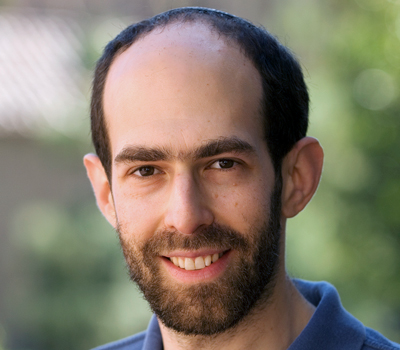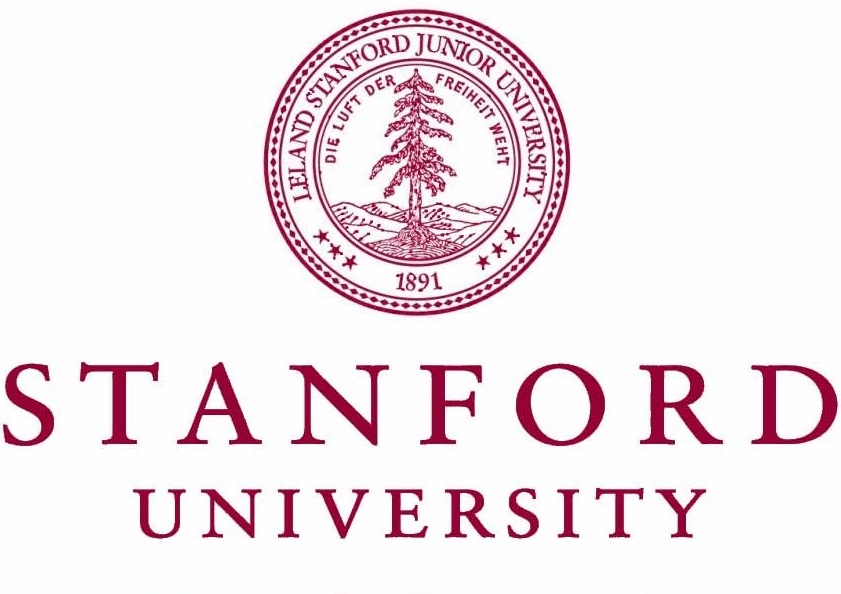Studying and manipulating electrons as individuals and in collective settings
If the drivers on our highways were without traffic laws and allowed to go wherever they wanted, our roads would be snarled with traffic accidents and gridlock. Electrons, by nature, function like cars without traffic laws. Prof. David Goldhaber-Gordon, of Stanford, is looking at what works for traffic and incorporating those ideas to guide the design of quantum nanostructures to transport electrons efficiently. Inspired by divided highways, Dr. Goldhaber-Gordon is creating one-way structures and moving electrons through them to get them to their destination while minimizing resistance and wasted energy. This experimental research has the potential to create faster computer technology, lower energy costs, and make battery-charged technology like cell-phones last a full day between charging.
As befits an innovator in the studies of nanostructures and quantum electron devices, Dr. Goldhaber-Gordon's work has been cited over 5000 times in scientific journals . He pioneered use of quantum dots as model quantum systems. Recently, he's been inspired by the following questions:
-
What if we could transmit current over long distances without resistance? Intel and other chip-makers can't make computer processors any faster, and soon won't be able to pack transistors closer together. One of the biggest challenges is creating wires ("interconnects") that have lower resistance than copper for a given length. Dr. Goldhaber-Gordon and his team are exploring ways to make wires whose resistance doesn't increase with length. Doing this has been possible for decades using cryogenic temperatures and high magnetic fields. The relevant phenomenon goes by the name "quantum Hall effect" and has won two Nobel Prizes. Recently, theorists proposed a way to remove the need for magnetic field, replacing it with magnetism like that in magnets we use to stick shopping lists to our home refrigerators. Goldhaber-Gordon's group has helped show that this works, achieving perfect 1-dimensional conduction over millimeter lengths. They now want to show how they can manipulate this conduction and move it to higher temperatures, where it might impact power consumption and speed of computer processors and maybe even reduce wasted power in electrical transmission lines.
-
What if we could transform properties of materials by applying huge electric fields? Much of our society's modern technology depends on semiconductors, materials whose electronic and optical properties can be tuned with voltages on nearby electrodes ("gates"). This works for semiconductors, because they have rather low density of mobile charges, so those charges can be substantially accumulated or depleted using modest electric fields. But other materials like metals, superconductors, and magnets tend to have much higher densities of mobile charges, so even a single atomic layer of copper has nearly 100 times as many mobile electrons as we could push around with a gate before destroying the insulator separating the gate from the conducting layer. If we could apply much larger electric fields, we might transform insulators into metals, metals into superconductors or magnets. Recently, a technique called electrolyte gating has become popular: a sample and another "gate" electrode are immersed in an electrolyte (a liquid or solid containing mobile ions) and a voltage is applied between the two. It's been reported to accomplish all the transformations suggested above. But it's not clear how it works -- are the necessary charges accumulated electrostatically or through electrochemistry? Dr. Goldhaber-Gordon's group has shown that electrochemistry is a big part of the picture, and has also recently shown how to block chemistry with an atomically-thin insulating barrier, while still allowing electrostatic charge accumulation 10x stronger than can be achieved with conventional gates.
Dr. Goldhaber-Gordon is also continuing his research on:
-
Quantum Dots: Electronic materials and devices are made up of billions of atoms and hence billions of electrons. Physicists cannot perfectly predicting the behavior of such a complex system, but they can often use a simple, approximate model description to capture the key aspects. Dr. Goldhaber-Gordon pioneered building nanoscale experimental realizations of such model many-body systems, and continues to lead in using them to give insights into behaviors of complex materials. For example, how the electrons on magnetic impurity atoms such as iron or nickel interact with mobile electrons in a surrounding metal such as copper is a central question in solid-state physics. Dr. Goldhaber-Gordon designed a quantum dot -- a nanoscale box containing a few electrons -- to represent a single impurity atom. Every electron acts as a tiny magnet. These magnets can pair off and cancel, but placing an odd number of electrons in the quantum dot means there will be one left over, so the artificial impurity atom is magnetic. Goldhaber-Gordon then used nanoelectrodes to tune the coupling of the quantum dot to nearby mobile electrons which play the role of the host metal, and saw how the localized and mobile electrons formed a novel collective state, quantitatively testing decades-old theories. Goldhaber-Gordon's group is now designing new nanostructures to see over what distance the surrounding electrons adjust to a magnetic impurity atom, how two magnetic atoms couple to each other, and whether we can observe new predicted "particles" emerging from a collection of electrons.
-
Innovative Microscopy: Chemists, engineers and physicists have found great ways of making nanoscale objects over the past two decades, but they are still severely limited in how well they can see what they have made and how it behaves. Dr. Goldhaber-Gordon and his team develop new types of microscopy to see inside nanoelectronic systems, mapping current flow patterns and electron organization. In addition, Dr. Goldhaber-Gordon co-founded and presently directs a center focused on developing such nano-microscopies.
In pursuing these grand challenges, Dr. Goldhaber-Gordon's group explores the weirdnesses of quantum mechanics as they relate to the complicated movements of electrons, and sees how they can manipulate small quantum systems. This leads to a type of understanding of our world as fundamental as that of cosmology or particle physics, and also has a chance of producing surprising phenomena that could be useful for technology.
Bio
Dr. Goldhaber-Gordon was born to a family of Physicists. He is the seventh Ph.D. Physicist or Chemist in his family, including his father, uncle, paternal grandfather and grandmother, as well as a great-aunt and great-uncle. He finds inspiration from them, especially the women who pursued top-level research at a time when it was hard for them to be taken seriously as scientists because of their gender. His parents encouraged him to follow his own path rather than pushing him toward the "family business," so when he picked his area of specialty for his Ph.D. he joked that his little rebellion was studying physics of materials instead of particle physics or cosmology like the rest of his family. Before earning his Ph.D. at MIT, Dr. Goldhaber-Gordon earned his Bachelor's in Physics and Master's in History of Science at Harvard.
Dr. Goldhaber-Gordon grew up on the North shore of Long Island, in the small village of Setauket (near Stony Brook University) and attended the excellent public schools there. Growing up, Dr. Goldhaber-Gordon loved math, games and logic puzzles - and still does. Being a physics researcher allows him to tackle more open-ended puzzles, with potential outcomes that are both harder to anticipate than in a board game and also especially satisfying to him because he's helping discover how the world works. Dr. Goldhaber-Gordon is equally passionate about guiding young students, and finds that thinking of science as puzzles works well in the classroom setting as well. He enjoys helping students uncover new ideas and apply them in their studies and research, often resulting in ways of thinking even he could never imagine in advance.
Aside from his research, Dr. Goldhaber-Gordon is a chocolate enthusiast, an interest that blossomed when he was a postdoc at Harvard and was named the Chocolate Steward of the Harvard Society of Fellows. He also enjoys growing unusual fruits and observing the changing seasons in his garden and at local farmers markets. With a collection of hundreds of board games, Dr. Goldhaber-Gordon spends much of his time at home exploring new games with his children and his wife Ilana who is a biochemist and a Rabbi. At the annual Limmud Bay Area conference, Dr. Goldhaber-Gordon and his wife have taught a session exploring how quantum mechanics can (and cannot) inform a spiritual view of the world.
Lab website: http://web.stanford.edu/group/GGG/
Personal website: http://www.goldhaber-gordon.com
Publications
Videos
Awards
National Academy of Sciences Award for Initiative in Research, 2006
One scientist chosen per year nationwide
Inaugural recipient of the George E. Valley Prize of the American Physical Society, 2002
APS's highest recognition for an early-career physicist. Awarded once every 2-3 years
William McMillan Award, 2002
Highest recognition for an early-career condensed matter physicist
Packard Fellow in Science and Engineering, 2004-2009
16 awarded across all fields of science and math
Air Force Presidential (PECASE) Awardee, 2003-2007
Two awarded per year nationwide


